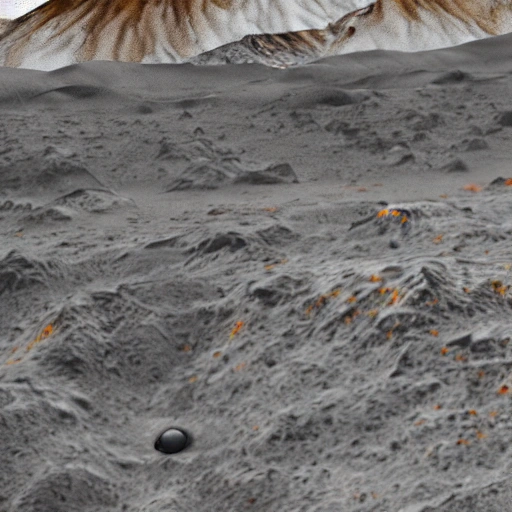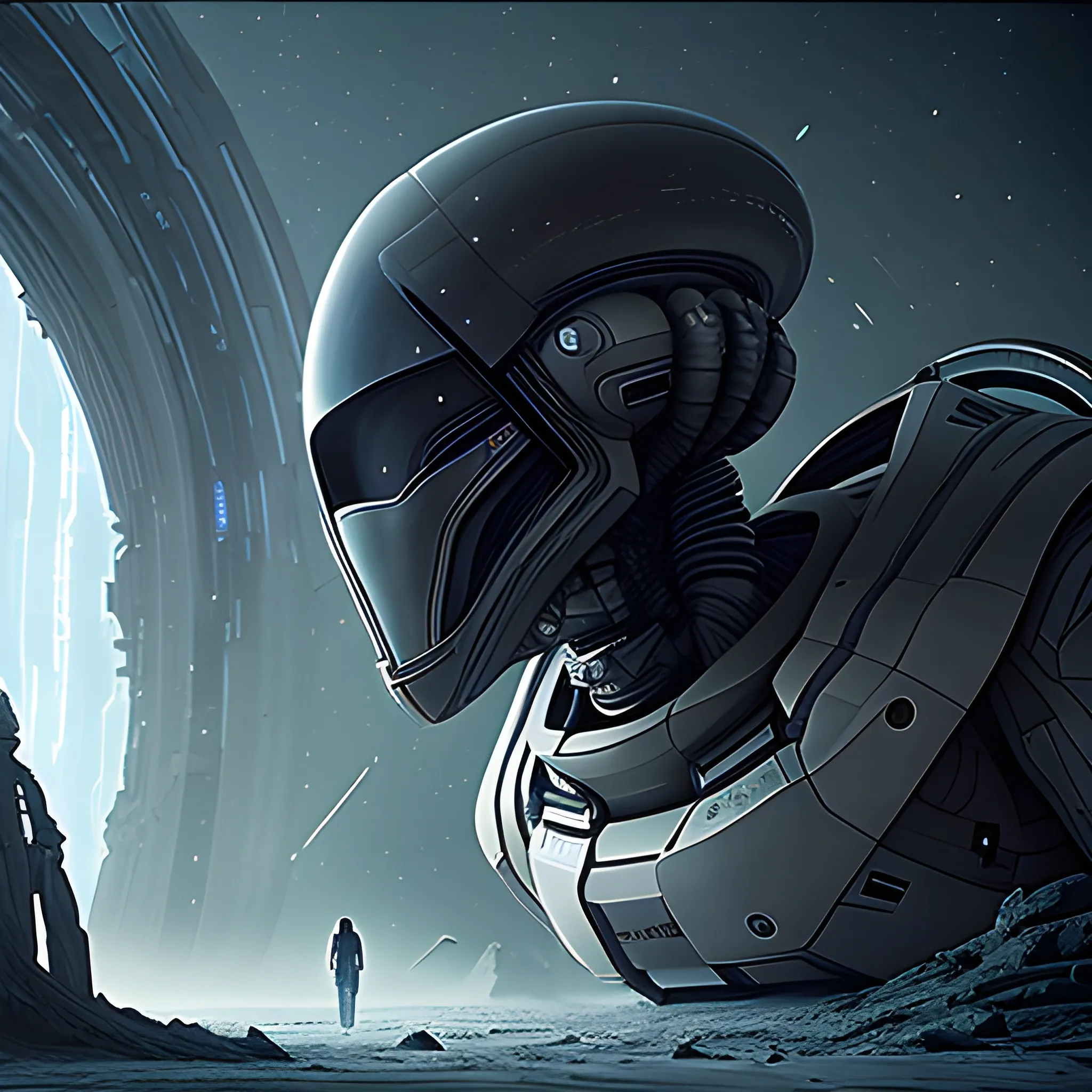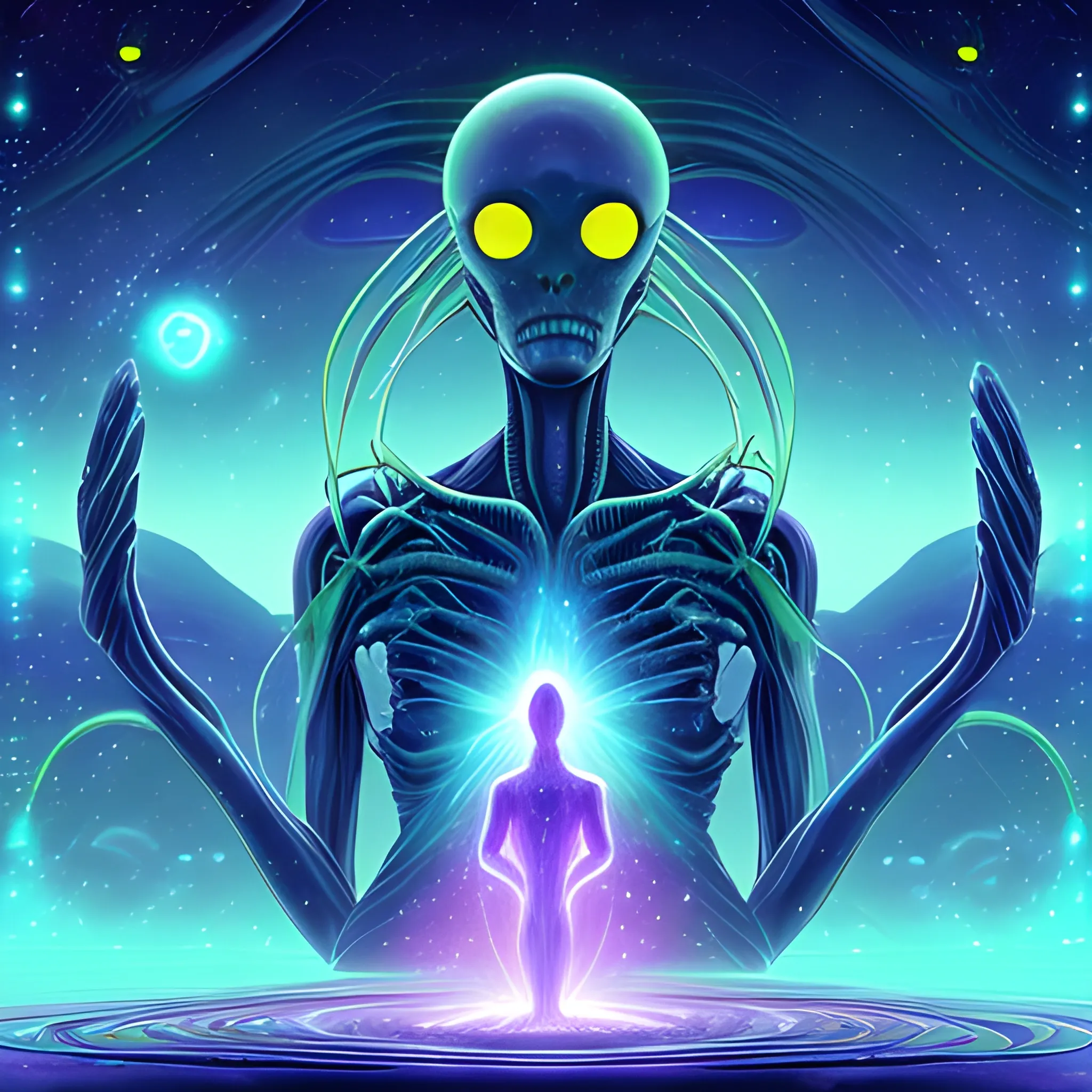Search Results for encounter
Explore AI generated designs, images, art and prompts by top community artists and designers.
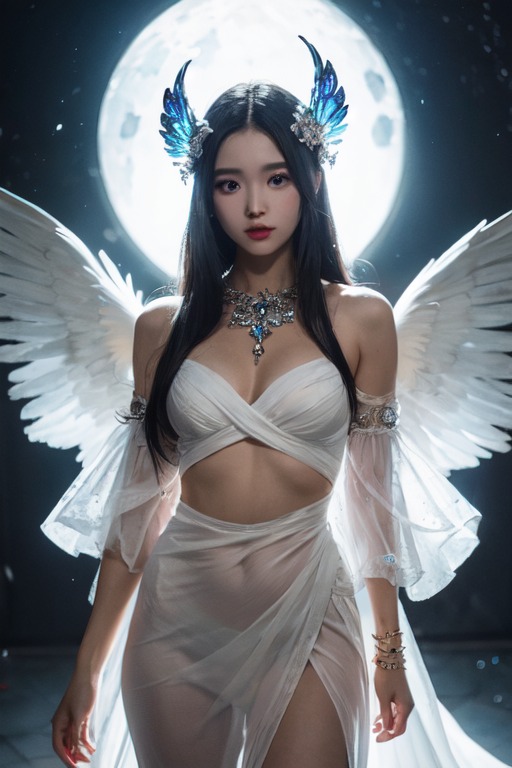
In a land where magic prevails and mythical creatures roam freely , there exists an enchanting realm known as Seraphia. A kingdom filled with ethereal beings who possess the extraordinary ability to shapeshift into any form they desire. Create a beautiful young girl with delicate , iridescent wings and a captivating aura that enchants all who behold her. Describe her graceful presence , the intricate patterns and colors on her wings , and the fantastical elements that make her utterly mesmerizing. Explore her backstory , her purpose within Seraphia , and the profound impact she has on those who are fortunate enough to encounter her. ,

Acid Rebel is a striking and rebellious figure with a unique appearance that reflects their nature as an individual who thrives amidst chaos. Their physical appearance and clothing are a testament to their nonconformity and unpredictable nature. Hair: Acid Rebel's hair is a vivid and wild cascade of neon colors. It may be a mix of lime green , electric blue , and fiery red , extending in untamed locks that flow freely around their head. Eyes: Their eyes are intense and piercing , often a striking shade of emerald green or deep violet , which seems to shimmer with an otherworldly glow. Their gaze exudes confidence and a hint of defiance. Complexion: Acid Rebel's skin tone is usually pale , contrasting with the vibrant colors of their hair and attire. Tattoos and Piercings: The rebel is adorned with various intricate tattoos and piercings that symbolize their affinity for chaos and their journey as a free spirit. They might have tattoos depicting swirling vortexes , chaotic symbols , or images of mythical creatures from the planes of chaos. Clothing: Acid Rebel's clothing is an eclectic mix of styles , all tied together by a theme of chaos and rebellion. They favor leather jackets adorned with spikes and studs , symbolizing their untamed spirit. Their shirts may bear provocative slogans or abstract , chaotic designs. Their pants could be adorned with various straps and buckles , lending to their edgy and unconventional look. Accessories: The character sports a collection of accessories that add to their unique style. These could include fingerless gloves , chunky chains , and a collection of rings and earrings in various shapes and sizes. Weapons: Acid Rebel wields unconventional weapons that embody their chaotic nature. They might carry an acid-imbued whip , a set of throwing knives with colorful handles , or a weapon that changes form with their emotions , reflecting the ever-shifting nature of chaos. Overall Demeanor: Acid Rebel moves with a confident swagger , radiating a sense of unpredictability. Their body language conveys a rebellious spirit , always on the lookout for opportunities to stir up chaos and challenge the status quo. Background: Acid Rebel's background is shrouded in mystery , and they rarely speak about their past. They are known to have traveled across the planes , encountering diverse cultures and embracing the chaos inherent in each one. This journey has shaped their worldview , and they now stand as a fierce defender of the balance between order and chaos , believing that the two forces are necessary for the world to flourish. As a character , Acid Rebel adds a dash of excitement and unpredictability to any campaign. Their appearance and personality make them memorable , and their motives can be both enigmatic and inspiring , driving the plot forward as they seek to navigate the delicate balance between chaos and order. ,
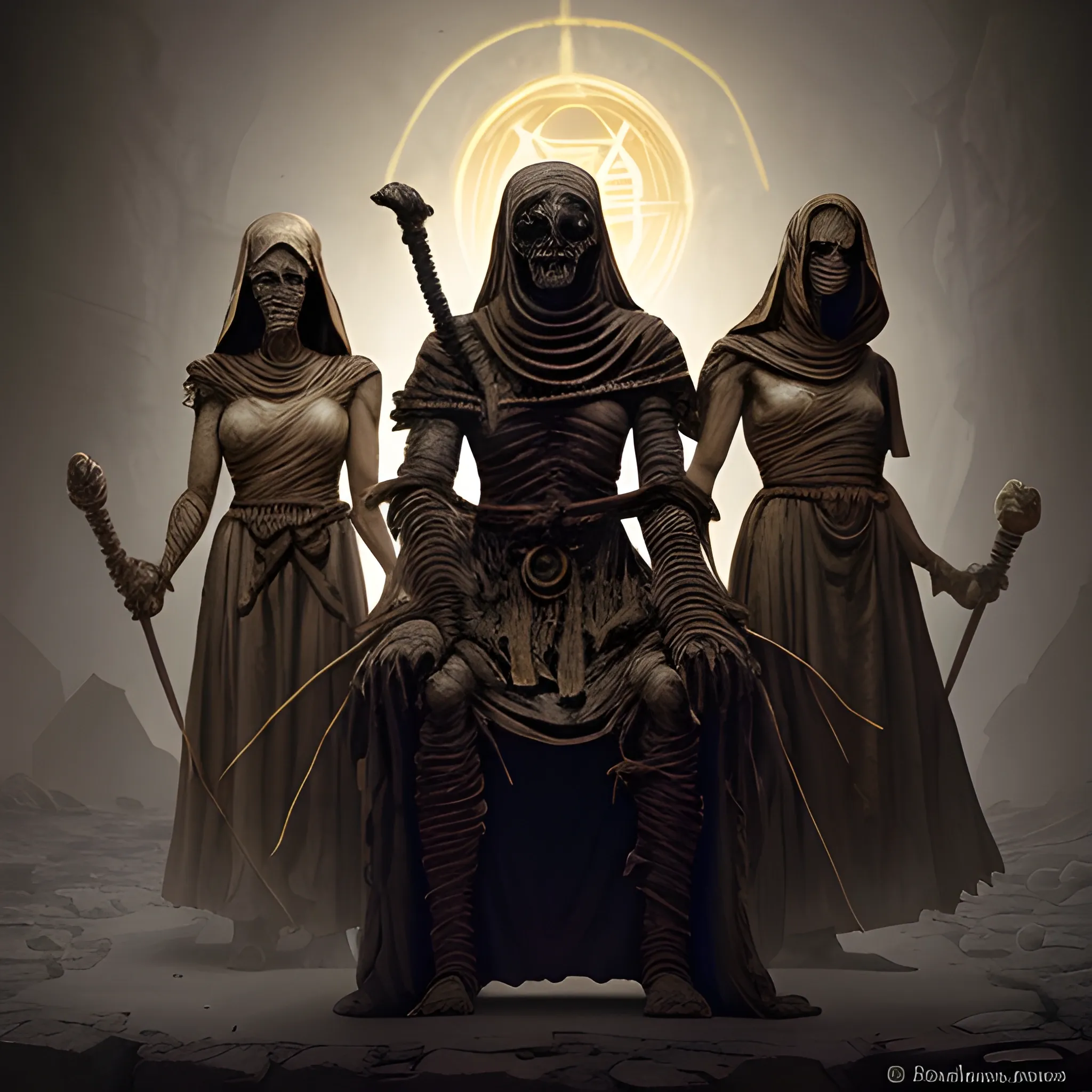
Appearance: A Mummy is an undead creature that was once a living being but has been preserved through dark magic and rituals. Its flesh has desiccated over time , leaving behind a shriveled and withered form. The Mummy's skin is often taut and dry , with a mummified appearance , and it may be adorned with ancient wrappings and burial garments. Its eyes glow with an eerie and malevolent light , a sign of the unnatural magic that sustains its existence. Features: Mummies are imbued with unholy strength and resilience , making them formidable foes in combat. They are immune to many common conditions , such as exhaustion and being charmed or frightened. Additionally , their touch carries a deadly curse that can afflict those they strike , causing the victim's flesh to wither and age rapidly. Habitat: Mummies are often found in ancient tombs , crypts , or burial sites where they were originally laid to rest. They may also be encountered in places of dark magic or necromantic influence , guarding ancient relics or carrying out the will of malevolent spellcasters. Behavior: Mummies are driven by a malevolent and unyielding purpose , often seeking revenge on those who disturbed their resting place or fulfilling some ancient oath or curse. As undead creatures , they have no emotions or desires , existing solely to enact their nefarious intent. Role in the World: In your DND world , Mummies could be the remnants of once-powerful individuals , priests , or pharaohs who sought immortality through dark rituals. They might be associated with ancient curses , guarding sacred treasures or ancient knowledge. Mummies could also serve as pawns of evil necromancers or malevolent entities seeking to spread their influence in the mortal realm. Encountering a Mummy in your campaign is a harrowing and perilous event for adventurers. Their curse-inflicting touch can rapidly age and weaken even the most stalwart of warriors. Players might need to uncover ancient lore or utilize specific magical items to protect themselves from the curse's effects. Holy magic or radiant damage can be particularly effective against these undead creatures , and players must be well-prepared to stand a chance against the Mummy's formidable strength and unholy powers. The presence of Mummies in your world can create an atmosphere of mystery and danger , adding an element of ancient history and eerie dread to the exploration of tombs and ruins. Players will need to be cautious and resourceful when dealing with these malevolent undead , as Mummies can prove to be one of the most formidable challenges they face in their quest for adventure and glory. ,
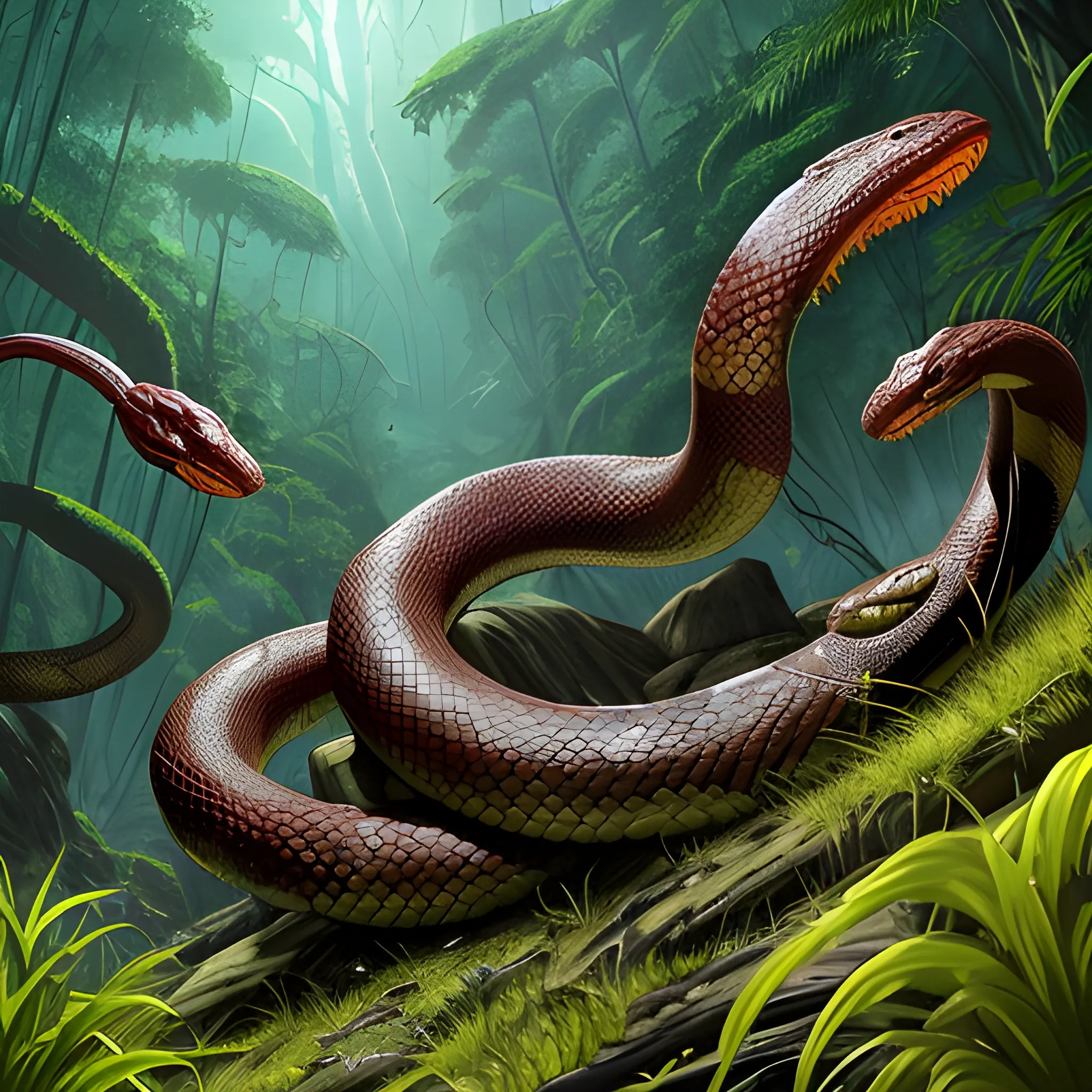
Appearance: The Giant Poisonous Snake is a massive and fearsome reptile , much larger than its smaller counterpart. It has a thick and muscular body , and its scales can have a range of colors , from mottled greens and browns to striking patterns that allow it to blend in with its surroundings. The snake's head is large and triangular , with a pair of long , hollow fangs through which it delivers its potent venom. Features: The Giant Poisonous Snake is known for its deadly venomous bite , which it uses to incapacitate and devour prey. Its venom is significantly more potent than that of its smaller cousin , making it a formidable threat to adventurers. A bite from a Giant Poisonous Snake can cause severe pain , paralysis , or even death , depending on the creature's size and resilience. Habitat: Giant Poisonous Snakes typically inhabit dense jungles , dark swamps , and other untamed wilderness areas. They prefer warm and humid environments and may be found in hidden lairs or lurking near water sources. In your DND world , they could guard sacred sites or serve as minions of malevolent beings. Behavior: Like their smaller counterparts , Giant Poisonous Snakes are stealthy predators , using their large size and camouflage to ambush prey. They strike swiftly and accurately , delivering their venom to immobilize their victims before consuming them. While generally non-aggressive , they may attack if they feel threatened or if potential prey ventures too close. Role in the World: In your DND world , Giant Poisonous Snakes could be apex predators in their habitat , feared and respected by other creatures. They might be associated with ancient legends or guarded by nature spirits. Druids and rangers might view them as symbols of balance and the wild's dangers. Encountering a Giant Poisonous Snake in the wild is a perilous and potentially deadly event for adventurers. The snake's venomous bite can have severe consequences , making quick thinking and decisive action essential to survive an encounter. Players must be well-prepared with protective spells , antidotes , or other means to counteract the venom's effects. The presence of Giant Poisonous Snakes in your campaign can create an atmosphere of danger and suspense , particularly in jungles or other untamed regions. Players will need to be vigilant and cautious during their explorations , as the looming threat of these massive venomous serpents adds an element of peril to their adventures. Giant Poisonous Snakes can serve as significant challenges for higher-level adventurers , reminding them of the dangers that still lurk even in seemingly familiar environments. ,

Children search different rooms in the old house for hidden gems , encountering ancient ghosts and traps. Delicate details of the rooms and children , diverse facial expressions. Vibrant colors , interesting details , dynamic movement. Clear lines , expressive facial expressions , motion effects. Adventure , manga , realistic ,

batman , superman , friends , caring , embracing , encounter , photo bashing epic cinematic octane rendering extremely high detail post processing 8k denoise , detailed , high resolution , HDR , sharp focus , 8k , 3D , hyper detail , 3D , Cartoon , Trippy , Oil Painting , Water Color , Pencil Sketch , 3D , Cartoon ,
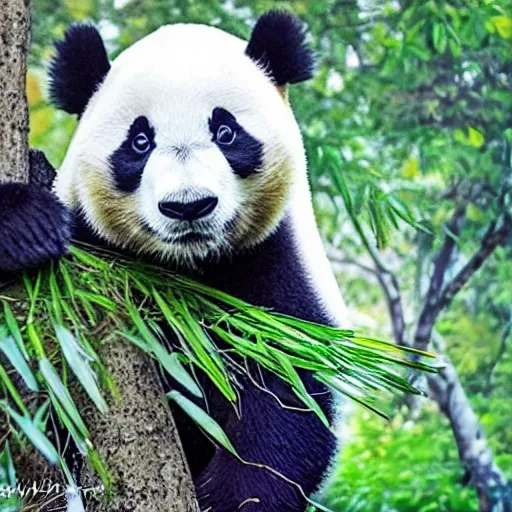
Join our adorable panda friend on a midjourny through a mystical forest! In the heart of the enchanted woods , the panda encounters a sparkling river , flowing with shimmering blue water. The panda stands on a mossy rock at the riverbank , surrounded by lush greenery and vibrant flowers. Look closely , and you'll notice a path leading deeper into the forest , where ancient trees with gnarled branches stand tall. Birds chirp overhead , their colorful feathers creating a beautiful contrast against the panda's black and white fur. The air is filled with the soft whispers of leaves dancing in the breeze , adding an aura of magic to the scene. The panda wears a little backpack , ready for adventure , and in one paw , it holds a treasure map. The map is filled with mysterious symbols and X marks the spot where a hidden treasure awaits! Can you help the panda find the way? Get your coloring tools ready and bring this magical moment to life! Use your imagination to color the panda , the forest , the river , and anything else that sparks your creativity. Let the panda's midjourny begin! ,
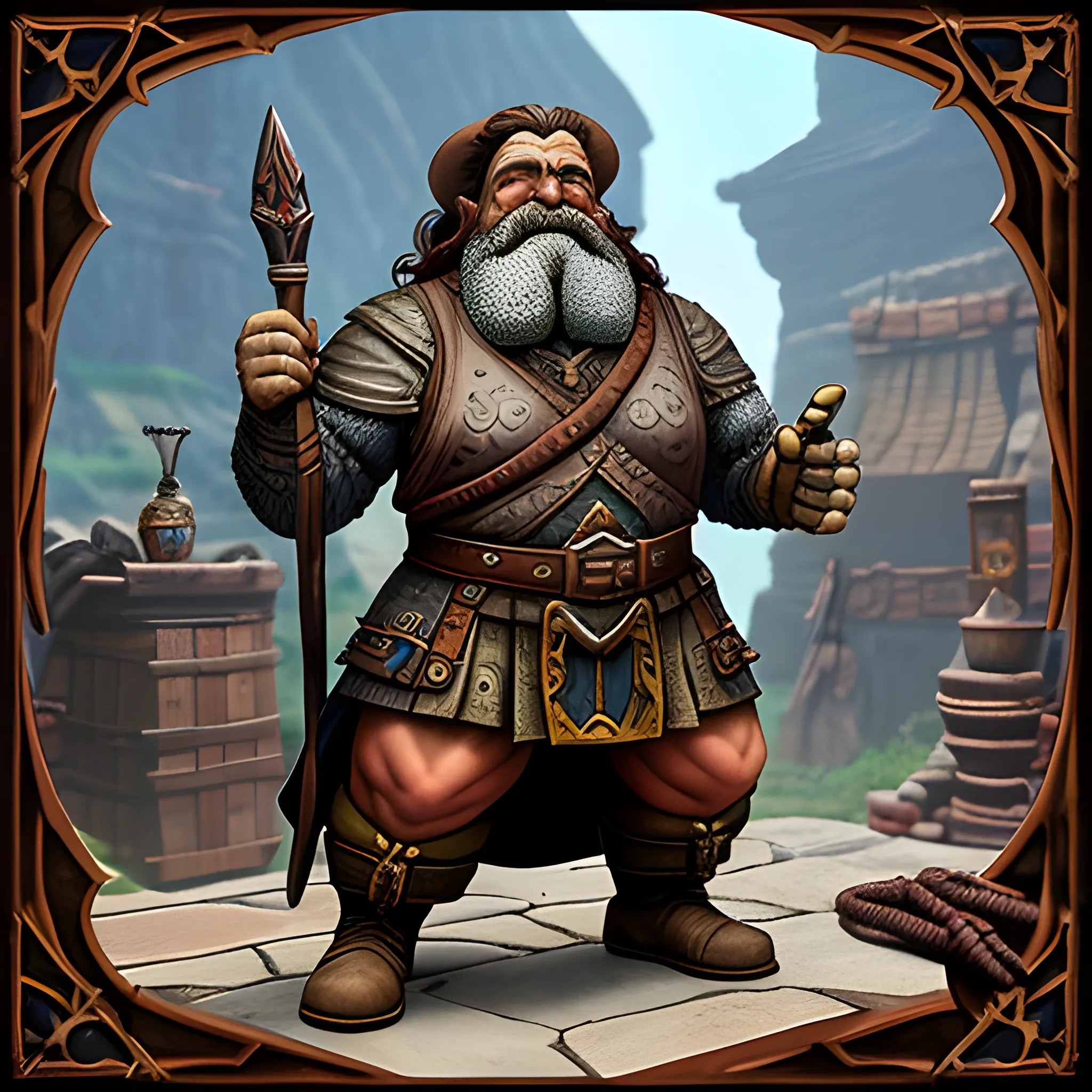
Appearance: The Dwarf smith is a stout and rugged figure , embodying the timeless image of their kin as master craftsmen. Their sturdy frame is adorned with a thick mane of braided , fiery-red hair that cascades down their broad shoulders. Their bushy beard is an impressive work of art , meticulously groomed and often adorned with small trinkets or metal accessories. Their eyes sparkle with determination and a deep passion for their craft , and their weathered hands bear the scars of countless hours spent at the forge. Features: The Dwarf smith is a skilled artisan , renowned for their exceptional craftsmanship and expert knowledge of metallurgy. They possess a deep understanding of various metals and their properties , enabling them to forge weapons , armor , and other masterpieces of unparalleled quality. Their workshop is a treasure trove of tools and materials , each item carefully organized and ready for use. Habitat: The Dwarf smith can be found in their bustling smithy , a place where the ringing of hammers against metal echoes through the air. Located either in the heart of a Dwarven stronghold or in a prominent human city , the smithy is a hub of activity , attracting adventurers seeking top-notch weapons and armor. In your DND world , this Dwarf might be part of a guild of esteemed craftsmen or a solitary artisan , dedicated to perfecting their craft. Behavior: True to their Dwarven nature , the smith is steadfast , dedicated , and fiercely proud of their work. They are renowned for their honesty and loyalty , and their reputation for delivering quality goods is impeccable. While their exterior may be gruff , they have a genuine warmth for those who appreciate their work and the art of blacksmithing. They take great pride in teaching their skills to the next generation , ensuring that the legacy of their craft endures. Role in the World: In your DND world , the Dwarf smith is more than a merchant of weapons and armor; they are a guardian of history and tradition. Their creations are sought after by warriors and adventurers who seek the best protection on their quests. The smith's craftsmanship is often the difference between life and death on the battlefield , and their work becomes an essential part of the heroes' journey. Encountering a Dwarf smith in your campaign can be a captivating and enriching experience for players. It presents an opportunity to delve into the intricacies of craftsmanship , trade , and the honor of hard work. The interactions with this dedicated artisan can lead to engaging role-playing moments , where players may seek their expertise , commission special items , or learn about the ancient art of blacksmithing. The presence of a Dwarf smith in your campaign world adds a sense of tradition and authenticity to the crafting aspect of your world. Their character serves as a reminder of the importance of skilled labor and the indomitable spirit of the Dwarven people. This NPC can become a beloved and respected character in your DND campaign , leaving a lasting impression on players as they journey through a world enriched by the artistry and dedication of skilled artisans. ,
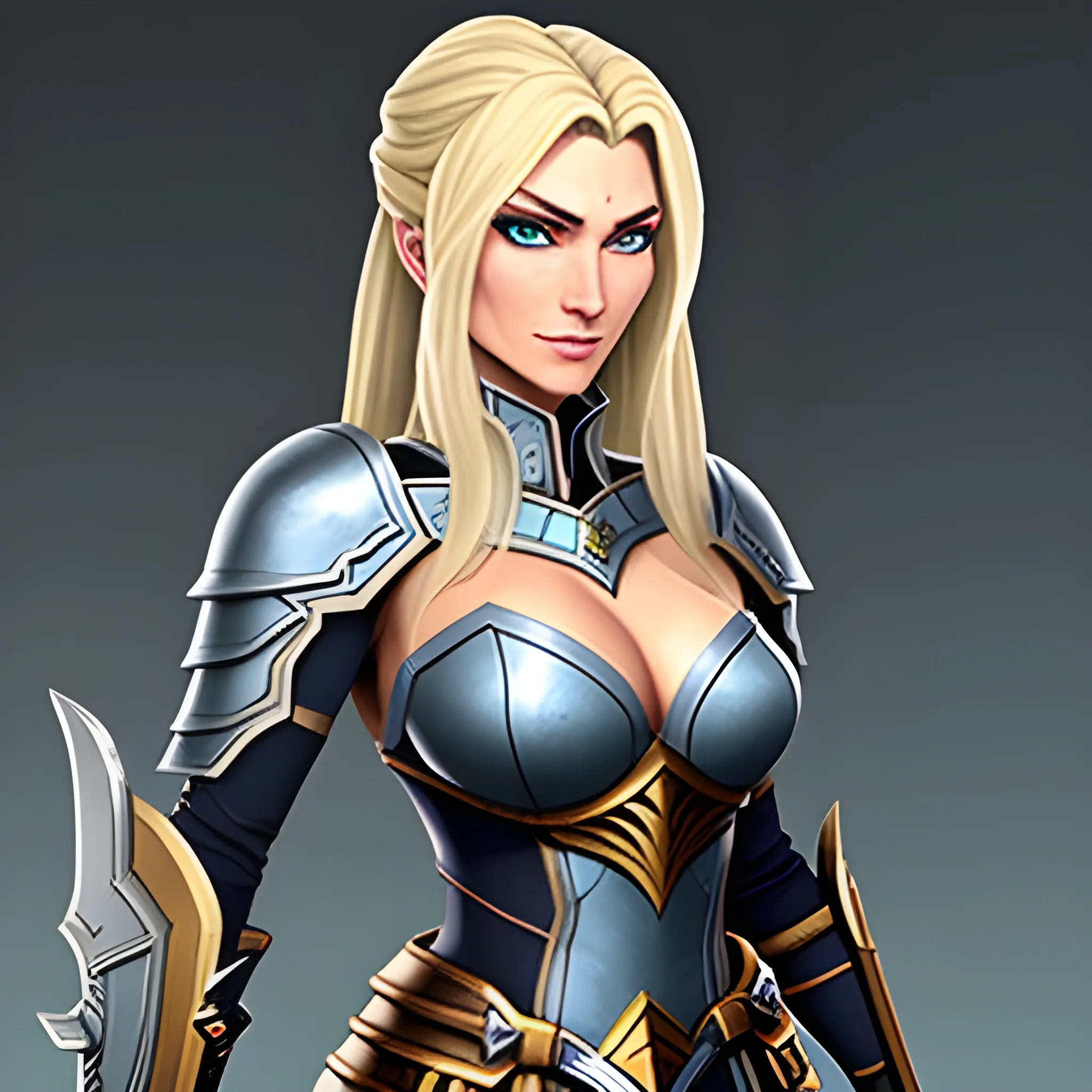
Appearance: Seraphina possesses a youthful and striking beauty , with long , flowing blond hair that cascades down her back like rays of sunlight. Her ocean-blue eyes sparkle with determination and a sense of adventure , mirroring the vast skies above the Isle of Everlight. She has a toned and athletic build , a testament to her years of training and physical prowess. Despite her youth , her aura exudes an air of maturity and confidence. Armor and Equipment: Seraphina wears a finely crafted set of armor , specially designed for her agile combat style. The armor provides excellent protection while allowing her the freedom of movement needed for swift and precise strikes. A stylized emblem of a lightning bolt , representing her surname "Stormrider , " is prominently displayed on her shoulder plate. She wields a slender but deadly longsword , its blade gleaming with an enchanting silvery aura. Demeanor: Energetic and vivacious , Seraphina approaches her duties with a zeal and sense of purpose that is contagious. She has a friendly and approachable demeanor , making her well-liked among the villagers of Silverhelm and Lord Elric's allies. Her interactions are filled with warmth and genuine interest in the people around her , establishing a strong rapport with those she encounters. Combat Skills: Seraphina is a highly skilled and agile combatant , specializing in swift and precise swordplay. She employs a combination of lightning-fast strikes and nimble footwork to outmaneuver her foes. Her battle style reflects her adaptability , making her equally formidable in one-on-one duels and on the battlefield amidst larger skirmishes. Background: Seraphina's journey as a skilled warrior began at a young age , inspired by her father's valor and the legends of heroic knights. She hails from a family of renowned knights and warriors , her father being a close friend and comrade of Sir Garett Ironshield. As a testament to her prowess , Seraphina was chosen by Sir Garett himself to serve as Lord Elric's guardian , a position she takes with great pride and honor. Personality: Beneath her fierce dedication to her duties , Seraphina possesses a kind heart and a sense of justice that fuels her desire to protect and serve. She is courageous , never hesitating to put herself in harm's way to shield Lord Elric or the villagers. Despite the seriousness of her role , she has a playful side and a keen sense of humor , enjoying camaraderie with fellow guards and the villagers alike. As a trusted member of Lord Elric's entourage , Seraphina Stormrider stands as a symbol of youthful determination and unwavering loyalty. Her presence adds a dynamic energy to the group , complementing Sir Garett's seasoned wisdom with her spirited enthusiasm. Together , they create a formidable and well-balanced team , united in their dedication to safeguarding their lord and the people of Silverhelm. ,
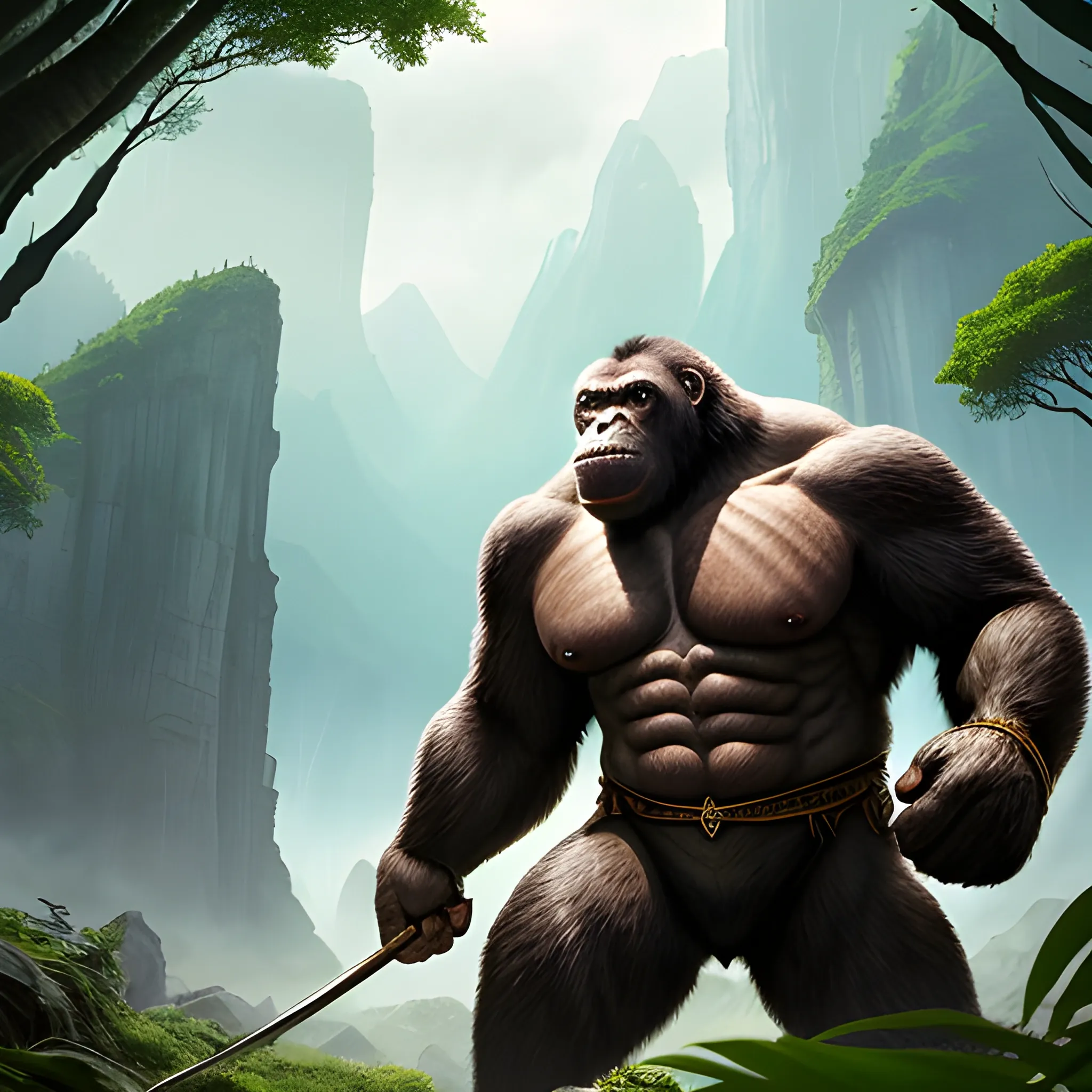
Appearance: The Giant Strong-Looking Ape is a colossal and awe-inspiring creature , towering over its smaller relatives with unmatched size and strength. It stands at least 15 feet tall when fully upright , its massive frame covered in thick and coarse fur that can range from dark brown to gray. The ape's muscular arms are capable of delivering devastating blows , and its hands have opposable thumbs , allowing it to manipulate objects with surprising dexterity for a creature of its size. Features: The Giant Strong-Looking Ape is a behemoth of raw power , possessing unmatched physical strength and resilience. Its formidable arms and massive claws make it a terrifying combatant , capable of crushing enemies with ease. In addition to its physical prowess , the Giant Strong-Looking Ape's intelligence is exceptional , enabling it to solve problems and even learn simple communication with others. Habitat: Giant Strong-Looking Apes inhabit remote and isolated regions , such as deep jungles , unexplored mountains , or hidden valleys. They are reclusive creatures , rarely encountered by humanoids. In your DND world , they might be guardians of ancient temples or sacred groves , revered as wise and powerful beings. Behavior: The Giant Strong-Looking Ape lives in small family groups , consisting of a dominant male , females , and offspring. While generally peaceful , they are fiercely protective of their territory and kin , resorting to aggressive displays or combat if threatened. Despite their fearsome appearance , they prefer to avoid conflict and are known to be surprisingly gentle with those who show respect and kindness. Role in the World: In your DND world , Giant Strong-Looking Apes could be enigmatic and mythical beings , seen as guardians of ancient secrets or protectors of nature's balance. Druids and rangers might form deep bonds with these majestic creatures , viewing them as ancient and wise allies in their quest to safeguard the natural world. Encountering a Giant Strong-Looking Ape in the wild is a rare and breathtaking event for adventurers. Players may feel a sense of awe and wonder as they behold this colossal creature , dwarfing everything around it with its immense size. If approached with caution and respect , adventurers might witness the intelligence and wisdom behind the Giant Strong-Looking Ape's eyes , offering opportunities for meaningful interactions and alliances. The presence of Giant Strong-Looking Apes in your campaign adds an air of mystery and majesty to remote and unexplored regions. Players may encounter these legendary creatures while venturing into uncharted territories or seeking to uncover ancient knowledge. Interacting with Giant Strong-Looking Apes can become a profound and transformative experience for adventurers , reminding them of the delicate balance between humanity and the natural world. These colossal beings can serve as both formidable opponents and steadfast allies , enriching the tapestry of your DND world with their legendary presence. ,
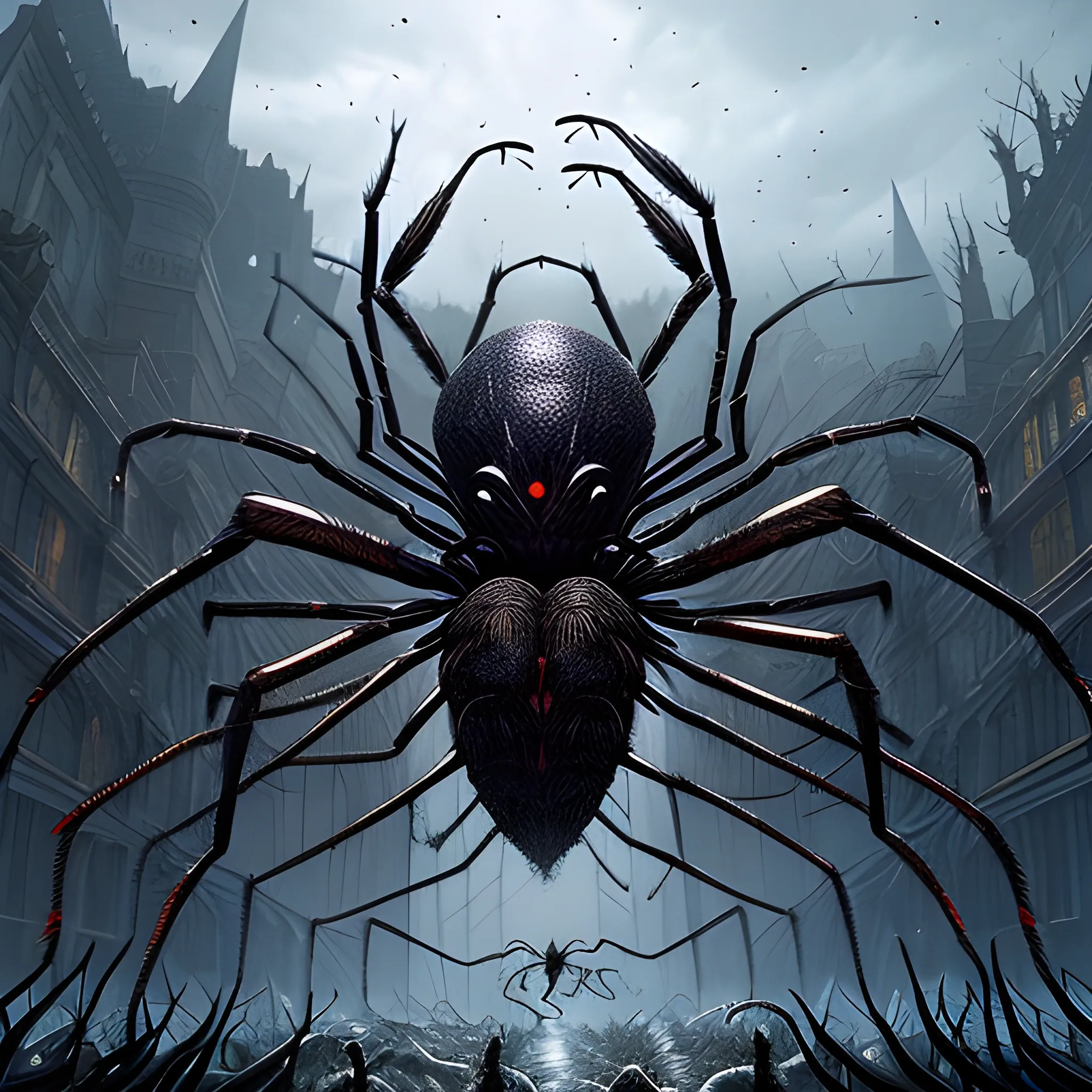
Appearance: A Swarm of Spiders is a horrifying and unsettling sight , as it consists of hundreds or even thousands of spiders working together as a single entity. The swarm appears as a writhing mass of crawling legs , forming a dark and undulating cloud of arachnids. The individual spiders in the swarm vary in size , but they are typically small , ranging from tiny spiders to larger ones with leg spans of a few inches. The swarm's color can range from a mix of dark browns and blacks to lighter hues , depending on the types of spiders comprising it. Features: The Swarm of Spiders moves with a coordinated fluidity , as if guided by an unseen intelligence. While each spider is relatively weak on its own , the collective strength of the swarm is overwhelming. The swarm is highly aggressive , attacking anything that comes within its vicinity. Its bite can deliver venom that , while not deadly , can cause pain , discomfort , and temporary paralysis. The swarm's sheer numbers can be its greatest advantage , allowing it to overwhelm and immobilize even larger creatures. Habitat: Swarms of Spiders are typically found in areas with a high concentration of spiders , such as dense forests , abandoned structures , or ancient ruins. They may inhabit dark and secluded places where their presence can go unnoticed until it's too late for unsuspecting intruders. Behavior: Swarms of Spiders are driven by instinct and the collective intelligence of the individual spiders that make up the swarm. They act as a cohesive unit , attacking en masse to subdue their prey and cocoon it in sticky webs. Swarms of Spiders can move quickly , scaling walls and surfaces with ease , which makes them challenging to escape from once they have engaged a target. Role in the World: In your DND world , Swarms of Spiders could be a terrifying threat lurking in the wild and dark corners of the land. They might be drawn to areas of powerful magic or necromantic influence , serving as guardians to forbidden places or the minions of evil spellcasters. The sight of a Swarm of Spiders can instill fear and panic in adventurers , as they face an unrelenting horde of venomous creatures. Encountering a Swarm of Spiders in your campaign can be a harrowing experience for adventurers. The swarm's ability to cover large areas and its relentless pursuit make it a deadly adversary. Players might need to think creatively to avoid or disperse the swarm , using spells , fire , or other area-of-effect attacks to fend off the spider horde. Additionally , the presence of Swarms of Spiders can create a sense of dread and trepidation , heightening the tension in areas where they are known to dwell , making players ever watchful for the signs of these arachnid hordes. ,

Appearance: The Constrictor Snake is a long and powerful reptile , known for its impressive ability to squeeze and suffocate its prey. It typically has a slender and muscular body , covered in scales that can vary in color from dull brown and green to vibrant patterns. Constrictor snakes have sharp , recurved teeth designed to grip and hold their prey as they constrict it. They are typically non-venomous and rely on their powerful constriction to subdue their victims. Features: The Constrictor Snake is a stealthy predator , relying on its keen senses to locate prey and ambush it. Its long , forked tongue allows it to taste the air and track potential food sources. Once it catches its prey , the snake coils around it , using its powerful muscles to squeeze and immobilize it. This method of hunting allows the snake to subdue prey larger than its mouth , as it doesn't need to swallow the victim whole. Habitat: Constrictor Snakes are found in a wide range of environments , from dense jungles and swamps to arid deserts and grasslands. They prefer warm climates and can be active both during the day and at night. In your DND world , they might inhabit untamed wilderness areas or hidden lairs , waiting for prey to pass by. Behavior: Constrictor snakes are generally solitary creatures , except during mating season. They are non-aggressive toward larger creatures , preferring to avoid confrontation when possible. When hunting , they rely on stealth and patience to surprise their prey. Their constriction technique is highly effective , allowing them to overpower and devour a variety of creatures. Role in the World: In your DND world , Constrictor Snakes could be a common predator in certain regions , often preying on small to medium-sized creatures. Druids and rangers might have a connection with these snakes , viewing them as symbols of balance in the natural world. Encountering a Constrictor Snake in the wild could be a challenging and potentially dangerous situation for adventurers. While they are not typically aggressive toward larger creatures , they may perceive humanoids as potential threats if they feel cornered or provoked. Players might need to exercise caution and use appropriate skills , such as animal handling or survival , to safely navigate through areas where these snakes are known to dwell. If adventurers find themselves facing a Constrictor Snake , they must be prepared for a battle of strength and wits , as the snake's constricting abilities can be deadly if not dealt with carefully. ,
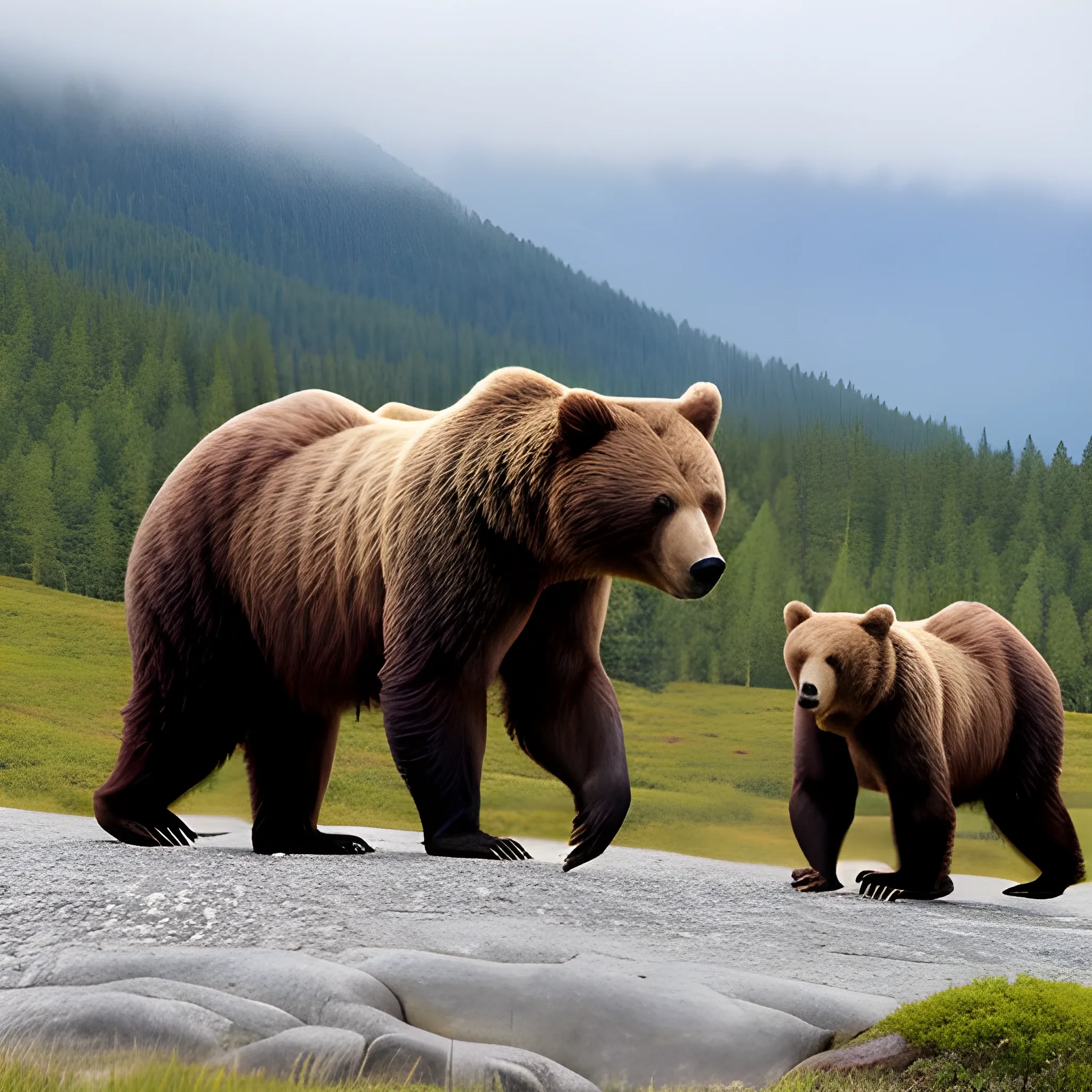
Appearance: The brown bear is a large and powerful creature , often considered the embodiment of strength and ferocity. It has a distinctive hump of muscle on its shoulders , which sets it apart from other bear species. Despite its name , the brown bear's fur can vary significantly in color , ranging from light brown to dark brown , and even shades of blonde or reddish-brown. Some individuals may have a lighter-colored face , creating a "grizzled" appearance , while others have a more uniform coloration throughout their body. Features: Brown bears are well-adapted for survival in various environments. They have strong limbs with sharp claws , which they use for digging , climbing , and catching prey. Their jaws are equipped with formidable teeth that can crush bones and tear through flesh. Adult brown bears can stand around 6 to 10 feet tall when on their hind legs , and their weight ranges from 400 to 1 , 500 pounds , with males being significantly larger than females. Habitat: Brown bears are versatile creatures , capable of inhabiting a wide range of habitats. They can be found in dense forests , grasslands , tundra , and mountainous regions. In your DND world , they might be common inhabitants of rugged wilderness areas , guarding their territories and foraging for food. Behavior: Brown bears are generally solitary animals , except during the breeding season or when a mother is caring for her cubs. They are omnivorous , having a diverse diet that includes berries , fruits , fish , insects , small mammals , and even carrion. Their intelligence and resourcefulness enable them to adapt to different food sources based on the season and availability. Role in the World: In your DND world , brown bears could play a significant role in the ecosystem. They might be seen as the apex predators of certain regions , balancing the population of prey animals and ensuring the health of the natural environment. Druids and rangers could have a special connection with brown bears , viewing them as symbols of the wild and protectors of nature. Encountering a brown bear in the wilderness could be a thrilling and potentially dangerous experience for adventurers. These formidable creatures are generally not aggressive toward humans , but they may become defensive if they feel threatened or if their territory is encroached upon. Adventurers might have opportunities to peacefully observe brown bears from a distance or use animal handling skills to avoid conflict. However , provoking or attacking a brown bear could lead to a fierce and challenging battle , as they are capable of inflicting significant damage with their powerful claws and jaws. ,
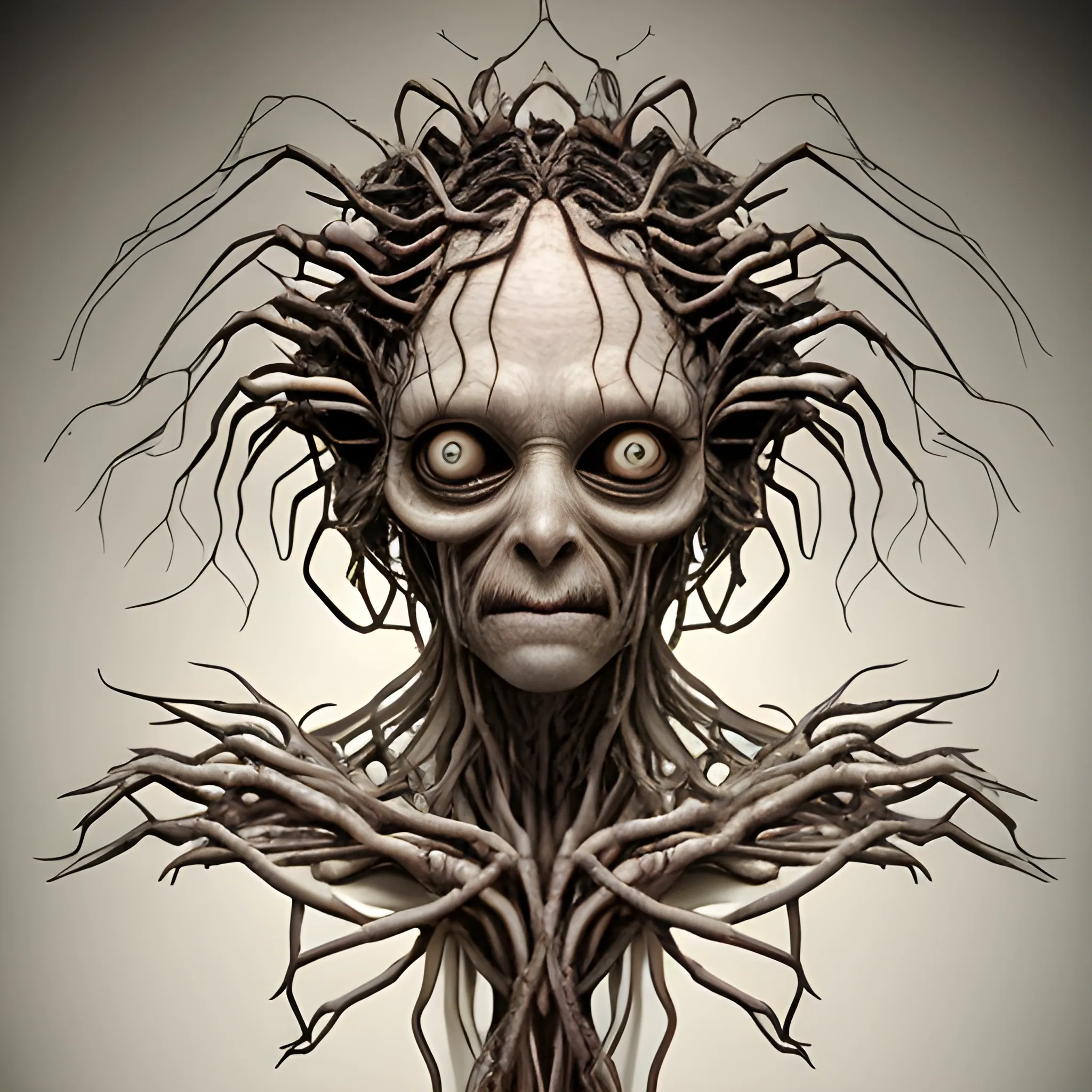
His body , made up of a tangle of many deformed arms , twist in impossible directions. These appendages , some ending in sharp claws and others in more human-like limbs , intertwine in a confusing manner , creating a mass of haphazardly flailing limbs. This creature's head is a nightmare in itself. With no defined face , it lacks recognizable human features , and instead presents a smooth , grotesque surface. His long , messy hair , more like tangled black threads , hangs shapelessly from his head , creating a dirty mane. This being's skin appears to be a mix of scales and flesh , with sickly tones ranging from pale to dark. Upon observing this abomination , the feeling of disgust would take over those who dared to look at it. There is nothing familiar or comforting about his presence; It is an embodiment of the repulsive and the unknown. Each of her movements is a dance of deformity , a manifestation of horror that defies natural laws and remains engraved in the minds of those who have the unfortunate experience of encountering her. ,

Acid Rebel is a striking and rebellious figure with a unique appearance that reflects their nature as an individual who thrives amidst chaos. Their physical appearance and clothing are a testament to their nonconformity and unpredictable nature. Hair: Acid Rebel's hair is a vivid and wild cascade of neon colors. It may be a mix of lime green , electric blue , and fiery red , extending in untamed locks that flow freely around their head. Eyes: Their eyes are intense and piercing , often a striking shade of emerald green or deep violet , which seems to shimmer with an otherworldly glow. Their gaze exudes confidence and a hint of defiance. Complexion: Acid Rebel's skin tone is usually pale , contrasting with the vibrant colors of their hair and attire. Tattoos and Piercings: The rebel is adorned with various intricate tattoos and piercings that symbolize their affinity for chaos and their journey as a free spirit. They might have tattoos depicting swirling vortexes , chaotic symbols , or images of mythical creatures from the planes of chaos. Clothing: Acid Rebel's clothing is an eclectic mix of styles , all tied together by a theme of chaos and rebellion. They favor leather jackets adorned with spikes and studs , symbolizing their untamed spirit. Their shirts may bear provocative slogans or abstract , chaotic designs. Their pants could be adorned with various straps and buckles , lending to their edgy and unconventional look. Accessories: The character sports a collection of accessories that add to their unique style. These could include fingerless gloves , chunky chains , and a collection of rings and earrings in various shapes and sizes. Weapons: Acid Rebel wields unconventional weapons that embody their chaotic nature. They might carry an acid-imbued whip , a set of throwing knives with colorful handles , or a weapon that changes form with their emotions , reflecting the ever-shifting nature of chaos. Overall Demeanor: Acid Rebel moves with a confident swagger , radiating a sense of unpredictability. Their body language conveys a rebellious spirit , always on the lookout for opportunities to stir up chaos and challenge the status quo. Background: Acid Rebel's background is shrouded in mystery , and they rarely speak about their past. They are known to have traveled across the planes , encountering diverse cultures and embracing the chaos inherent in each one. This journey has shaped their worldview , and they now stand as a fierce defender of the balance between order and chaos , believing that the two forces are necessary for the world to flourish. As a character , Acid Rebel adds a dash of excitement and unpredictability to any campaign. Their appearance and personality make them memorable , and their motives can be both enigmatic and inspiring , driving the plot forward as they seek to navigate the delicate balance between chaos and order. ,
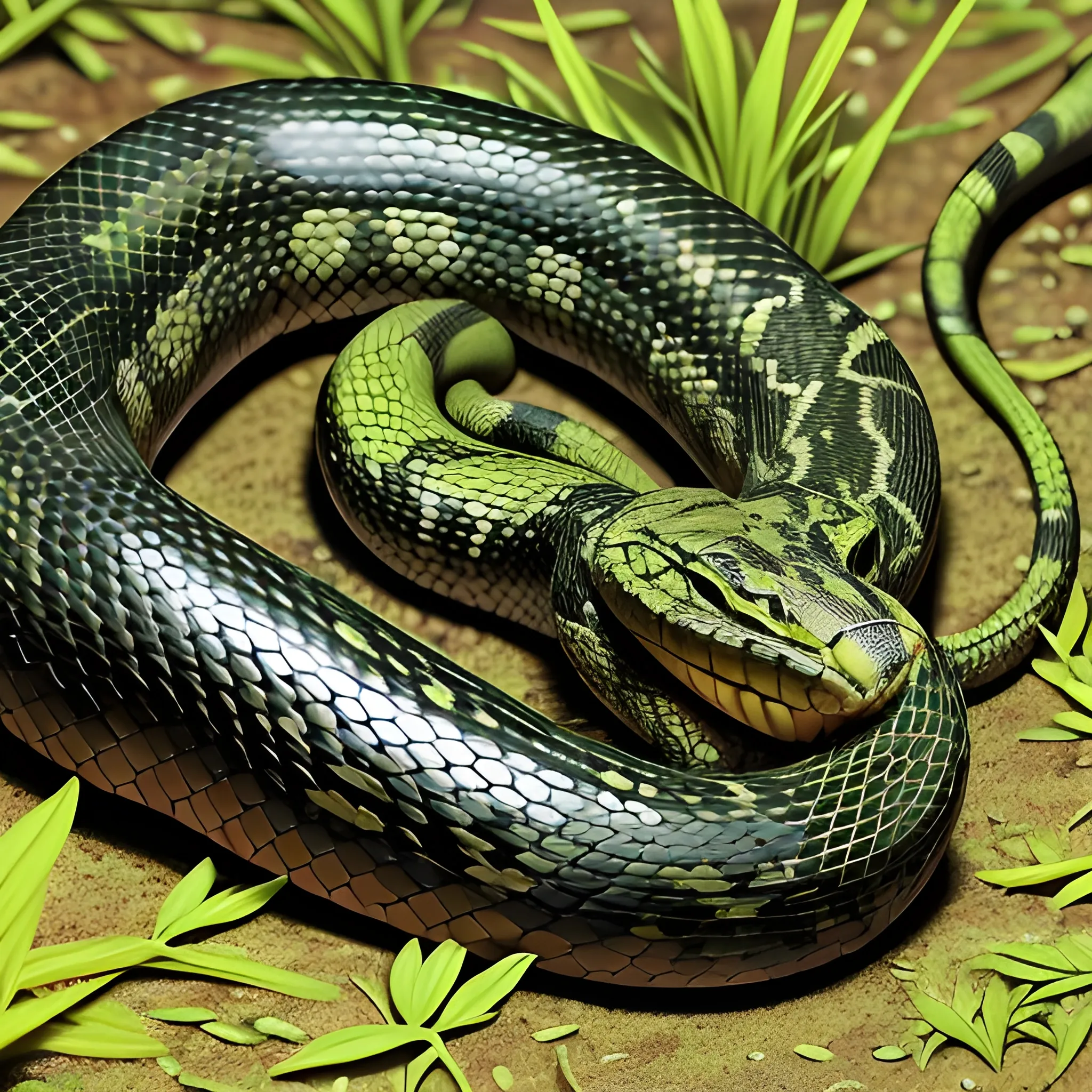
Appearance: The Poisonous Snake is a small to medium-sized reptile with a slender body and a distinctive pattern of scales. Its colors can vary widely , from vibrant and striking patterns to more muted earth tones , helping it blend into its natural surroundings. The snake's head is triangular , and it has a pair of fangs at the front of its mouth , through which it delivers its venom. Features: The Poisonous Snake is known for its venomous bite , which it uses to incapacitate its prey and defend itself from threats. Its venom can vary in potency , from causing mild discomfort to being deadly , depending on the species. While not as powerful as the venom of more dangerous creatures , the Poisonous Snake's bite can still cause considerable harm to unwary adventurers. Habitat: Poisonous Snakes can be found in a wide range of environments , from dense jungles and forests to dry deserts and grasslands. They are highly adaptable creatures and can thrive in various conditions , making them a common sight in untamed wilderness areas. Behavior: The Poisonous Snake is a stealthy predator , relying on its camouflage and patience to ambush its prey. It strikes quickly and accurately , using its venom to immobilize and begin the process of consuming its victim. Poisonous Snakes are generally non-aggressive towards larger creatures , preferring to flee rather than confront a potential threat. Role in the World: In your DND world , Poisonous Snakes could serve as common dangers in the wild , particularly in regions where adventurers explore untamed territories. Druids and rangers might have a connection with these creatures , viewing them as part of the natural balance. Encountering a Poisonous Snake in the wild can be a common and potentially hazardous event for adventurers. While they are generally not aggressive , they may strike if they feel threatened or cornered. Players might need to exercise caution and use skills such as animal handling or survival to avoid confrontations with these venomous reptiles. If adventurers do find themselves bitten , they must act quickly to counteract the effects of the venom and avoid more serious consequences. The presence of Poisonous Snakes in your campaign adds an element of realism and danger to the wilderness. Players will need to be vigilant and watchful during their travels , as the risk of encountering these venomous creatures is ever-present. Poisonous Snakes can also serve as a minor but meaningful challenge , especially for lower-level adventurers , teaching them the importance of preparation and awareness in the untamed wilderness. ,
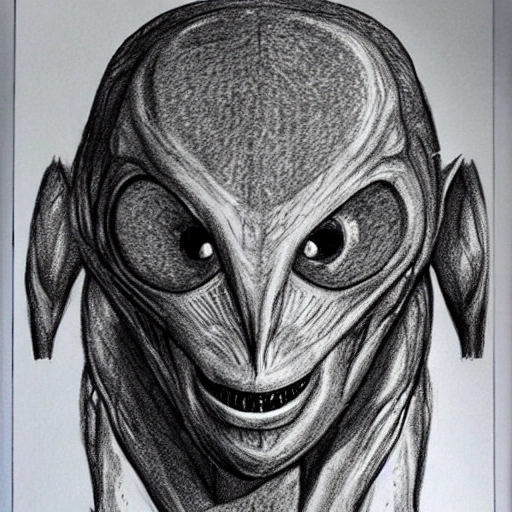
, Pencil Sketch. Imagine being the first human to come face to face with an alien being! This design captures the excitement and fear of such an encounter. The alien's features are both fascinating and unsettling , and we can only guess at its intentions. Perhaps it comes in peace , or maybe it has come to conquer our planet. Whatever the case , this design is a reminder that we are not alone in the universe ,

Highly detailed photorealistic portrait of a woman with a modern bob haircut and strikingly vivid eyes. She is wearing a traditional high-collared , sleeveless qi pao that is transformed into a canvas for intricate painting. The painting depicts a vibrant , colorful Chinese dragon , a symbol of power and grace , that wraps around the contours of her figure. The dragon is designed with bold lines and shades of blue and gold. The background is neutral to keep the focus on her and the detailed tattoo. Her expression is serene yet penetrating , inviting a sense of intrigue and depth , bioluminescent glowing , playful body manipulations , non-douche smile , gaze into the camera , holographic shimmer , whimsical lighting , enchanted ambiance , soft textures , imaginative artwork , ethereal glow , silent Luminescence , whispering Silent , iridescent Encounter , vibrant background , by Skyrn99 , (((rule of thirds))) , high quality , high detail , high resolution , (bokeh:2) , backlight , long exposure:2 , <Alienor_A> , ,
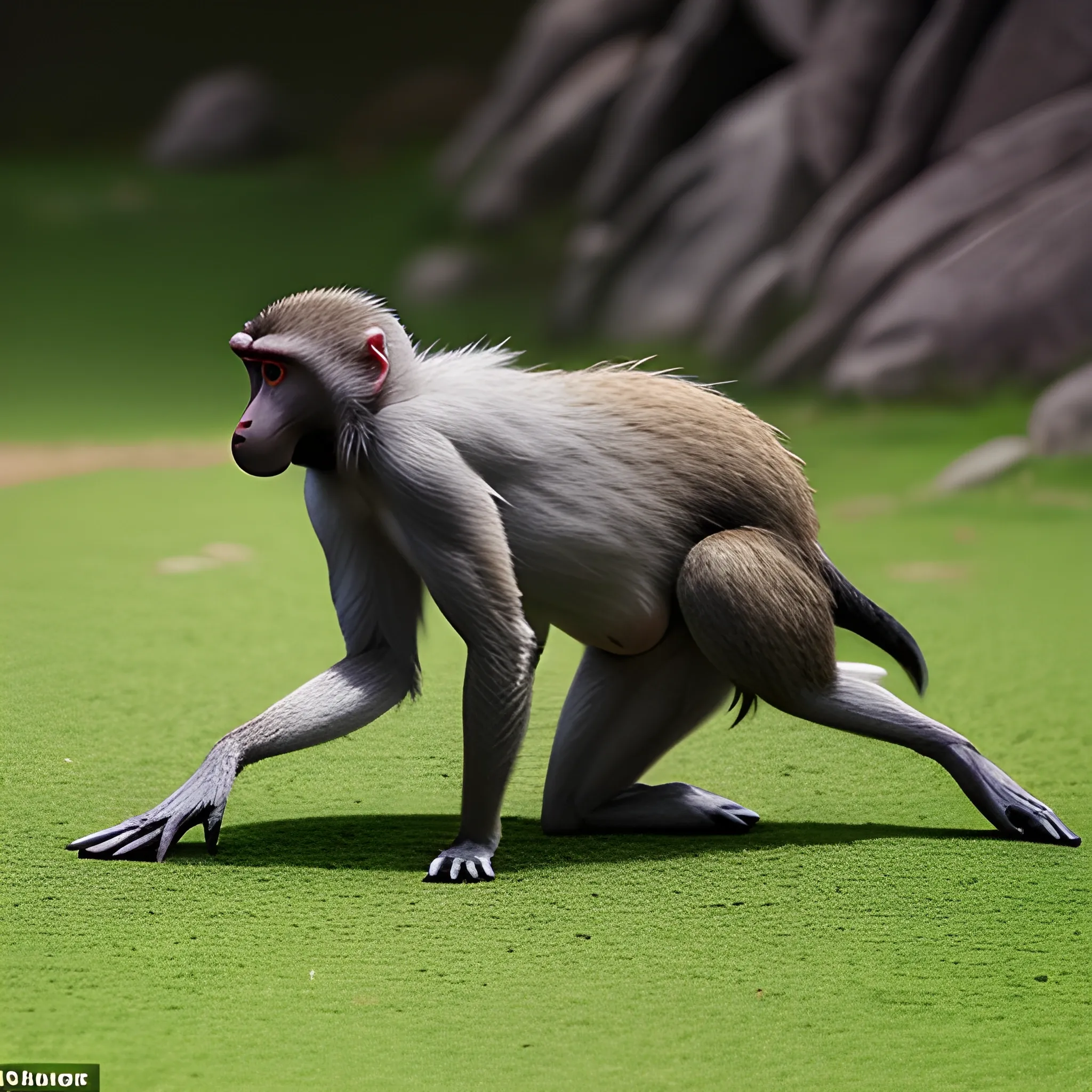
Appearance: The Baboon is a medium-sized primate with a distinctive and charismatic appearance. It has a robust and muscular body , covered in short fur that can range in color from brown to gray or even olive-green. Baboons have a dog-like snout , sharp teeth , and a hairless face with prominent cheek pouches , which they use to store food. They have long arms and powerful legs , allowing them to move quickly and with agility. Features: Baboons are highly social creatures , living in close-knit troops that can consist of a few individuals to larger groups. Their intelligence and adaptability enable them to survive in various environments , from lush jungles to arid savannahs. They are known for their strong social hierarchy and complex communication , using vocalizations , gestures , and facial expressions to convey emotions and intentions. Habitat: Baboons are versatile animals that can thrive in a range of habitats , including forests , grasslands , and mountainous regions. They are often found near water sources , as they require regular access to drinking water. In your DND world , baboons might inhabit areas with lush vegetation or live in proximity to humanoid settlements , scavenging for food scraps. Behavior: Baboons are opportunistic omnivores , with a varied diet that includes fruits , leaves , seeds , insects , and small animals. They are skilled climbers and can use their agility to escape predators or reach high-up food sources. Baboons are known for their playfulness , engaging in social interactions , grooming , and even games with each other. Role in the World: In your DND world , baboons could serve as a part of the natural ecosystem or be associated with certain deities or nature spirits. Druids and rangers might have a special connection with baboons , viewing them as symbols of adaptability and community. Encountering baboons in the wild could present various opportunities for adventurers. They might have non-combat interactions with the primates , such as observing their social behaviors or using animal handling skills to communicate with them. Baboons could also play a role in quests involving local tribes or settlements , where their presence might be considered either beneficial or problematic depending on the circumstances. While not inherently aggressive , baboons can defend themselves and their troop if they feel threatened , making it essential for adventurers to approach them with respect and caution. ,

In a land where magic prevails and mythical creatures roam freely , there exists an enchanting realm known as Seraphia. A kingdom filled with ethereal beings who possess the extraordinary ability to shapeshift into any form they desire. Create a beautiful young girl with delicate , iridescent wings and a captivating aura that enchants all who behold her. Describe her graceful presence , the intricate patterns and colors on her wings , and the fantastical elements that make her utterly mesmerizing. Explore her backstory , her purpose within Seraphia , and the profound impact she has on those who are fortunate enough to encounter her. ,
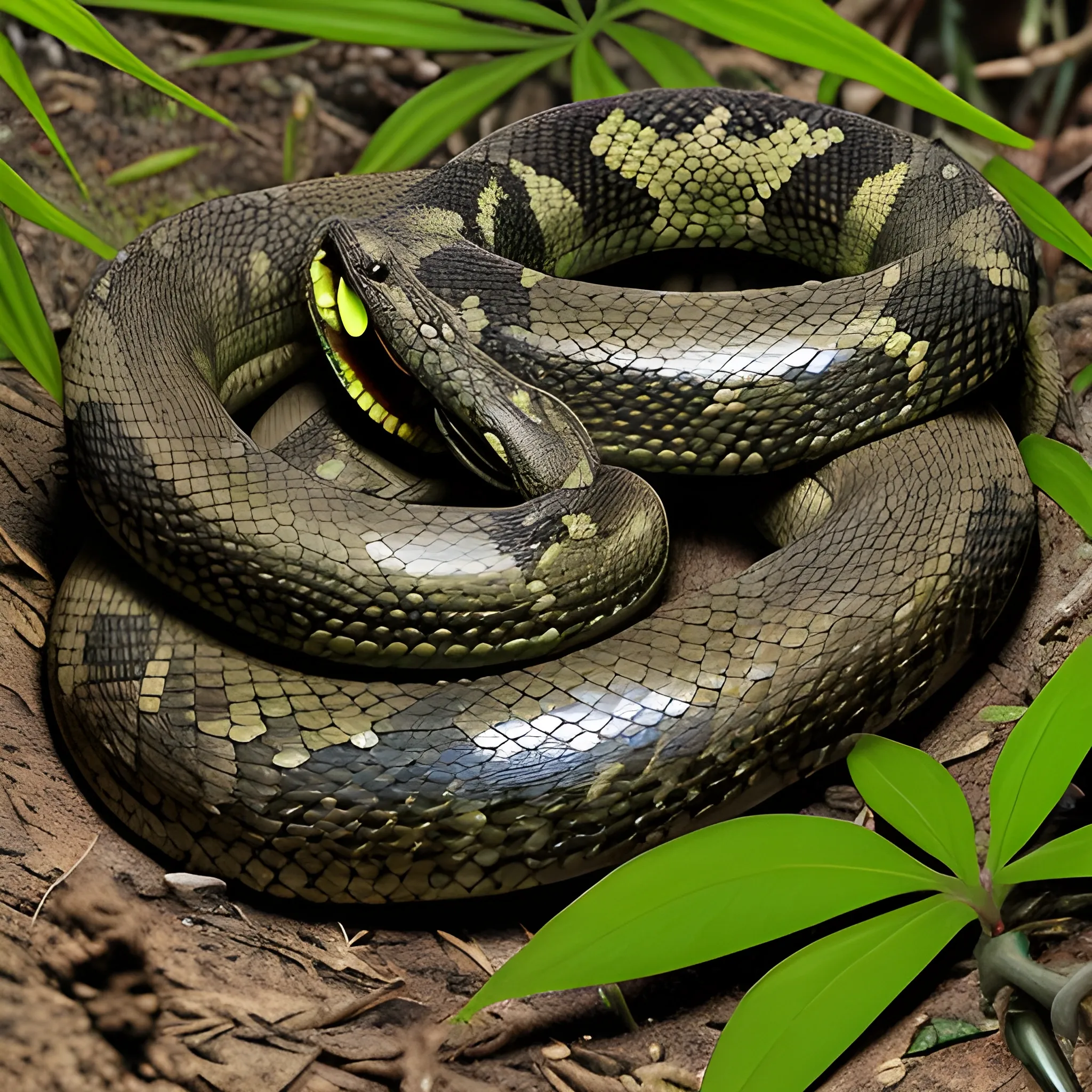
Appearance: The Poisonous Snake is a small to medium-sized reptile with a slender body and a distinctive pattern of scales. Its colors can vary widely , from vibrant and striking patterns to more muted earth tones , helping it blend into its natural surroundings. The snake's head is triangular , and it has a pair of fangs at the front of its mouth , through which it delivers its venom. Features: The Poisonous Snake is known for its venomous bite , which it uses to incapacitate its prey and defend itself from threats. Its venom can vary in potency , from causing mild discomfort to being deadly , depending on the species. While not as powerful as the venom of more dangerous creatures , the Poisonous Snake's bite can still cause considerable harm to unwary adventurers. Habitat: Poisonous Snakes can be found in a wide range of environments , from dense jungles and forests to dry deserts and grasslands. They are highly adaptable creatures and can thrive in various conditions , making them a common sight in untamed wilderness areas. Behavior: The Poisonous Snake is a stealthy predator , relying on its camouflage and patience to ambush its prey. It strikes quickly and accurately , using its venom to immobilize and begin the process of consuming its victim. Poisonous Snakes are generally non-aggressive towards larger creatures , preferring to flee rather than confront a potential threat. Role in the World: In your DND world , Poisonous Snakes could serve as common dangers in the wild , particularly in regions where adventurers explore untamed territories. Druids and rangers might have a connection with these creatures , viewing them as part of the natural balance. Encountering a Poisonous Snake in the wild can be a common and potentially hazardous event for adventurers. While they are generally not aggressive , they may strike if they feel threatened or cornered. Players might need to exercise caution and use skills such as animal handling or survival to avoid confrontations with these venomous reptiles. If adventurers do find themselves bitten , they must act quickly to counteract the effects of the venom and avoid more serious consequences. The presence of Poisonous Snakes in your campaign adds an element of realism and danger to the wilderness. Players will need to be vigilant and watchful during their travels , as the risk of encountering these venomous creatures is ever-present. Poisonous Snakes can also serve as a minor but meaningful challenge , especially for lower-level adventurers , teaching them the importance of preparation and awareness in the untamed wilderness. ,
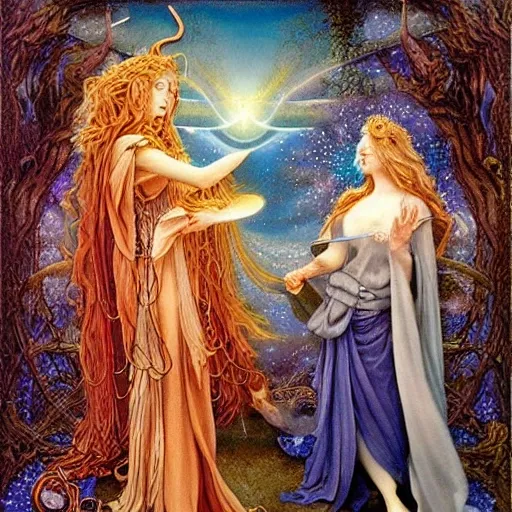
mystical encounter or revelation Greek man philosopher Parmenides meeting goddess Persephone outside of the physical realm , in a transcendent or metaphysical realm beyond ordinary perception , Eternal , Radiant , Divine , Wise , Immutable , Cosmic , Transcendent , acrylic painting by Kinuko Y. Craft , Brian Froud , Jasmine Becket-Griffith , Luis Royo , Trippy , Oil Painting ,
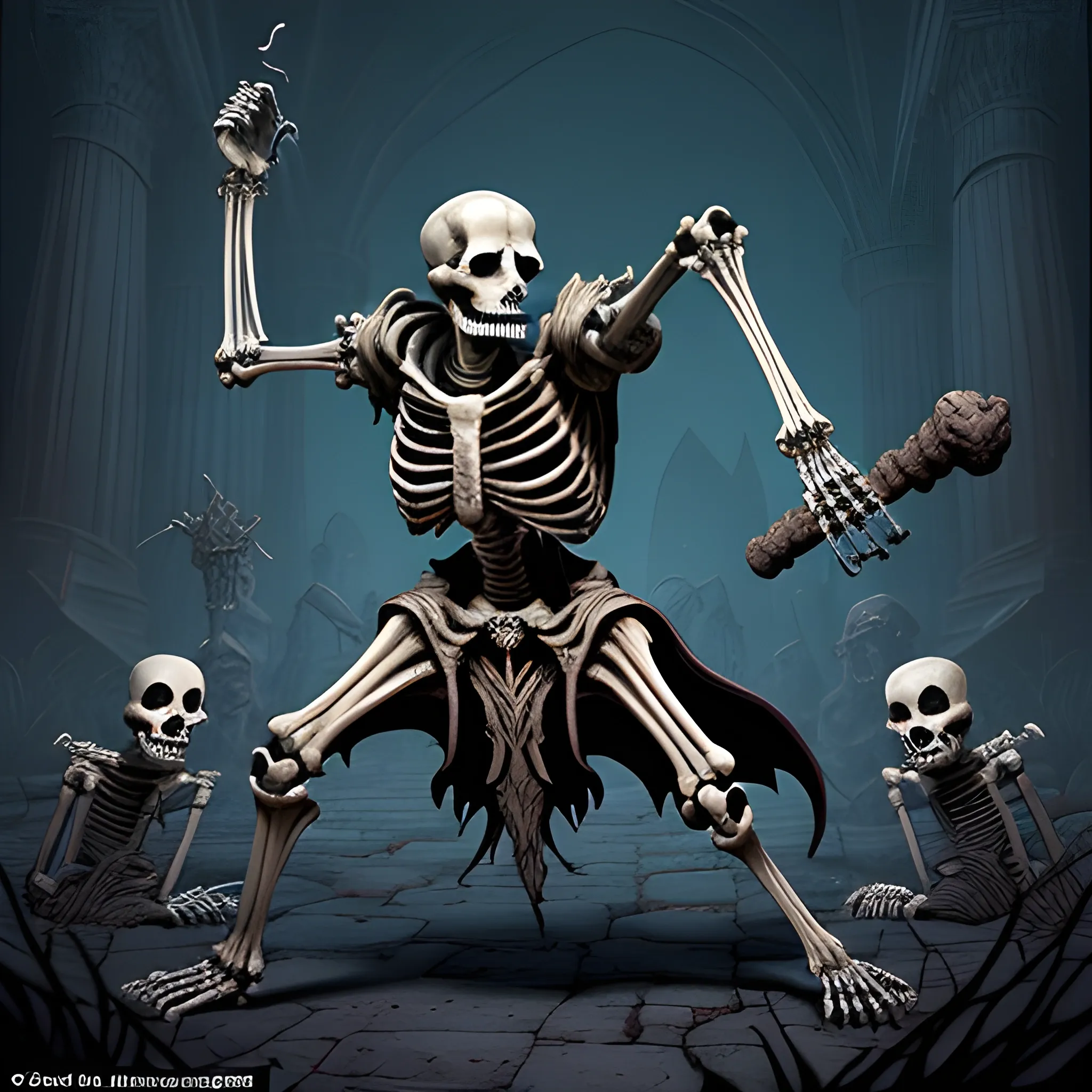
Appearance: A skeleton is a reanimated undead creature , the animated remains of a once-living being. They are skeletal in form , devoid of flesh and organs , and are held together by dark necromantic magic. Their bones can be of various sizes and shapes , depending on the creature they were before death. The bones of a humanoid skeleton are often bleached white , while those of larger creatures might retain a more weathered appearance. Features: Skeletons are mindless creatures , devoid of the emotions and intellect they possessed in life. Their movements are stiff and jerky , controlled by the magic that animates them. They lack the strength and capabilities they had in life but can still be formidable due to their resistance to exhaustion and immunity to poison and many mind-affecting spells. Habitat: Skeletons can be found in various environments , wherever dark necromantic magic is practiced or where ancient burial sites have been disturbed. They are often encountered in crypts , dungeons , or as guardians of forgotten tombs. In your DND world , they might be the remnants of fallen warriors or victims of dark rituals , arising to serve their necromantic masters. Behavior: As mindless undead , skeletons are compelled to follow the commands of their creators or necromancers who control them. They have no will of their own and exist solely to fulfill the tasks assigned to them. Whether that means guarding a location , attacking intruders , or carrying out a specific purpose , skeletons are bound to carry out their orders until they are destroyed. Role in the World: In your DND world , skeletons could serve as a constant reminder of the dark arts and the dangers of necromancy. They may be used by evil necromancers as minions or guardians , lurking in ancient crypts or dungeons to deter intruders. Adventurers might encounter them in their quest to thwart dark forces or uncover the secrets of long-forgotten ruins. Encountering a skeleton in your campaign often means dealing with a mindless foe that is immune to many traditional methods of persuasion. Adventurers might use various tactics to overcome them , such as using holy magic , radiant damage , or weapons that can shatter or disassemble the undead. While individually not as threatening as some other creatures , the real challenge lies in facing hordes of skeletons , as their numbers can quickly overwhelm unprepared adventurers. ,
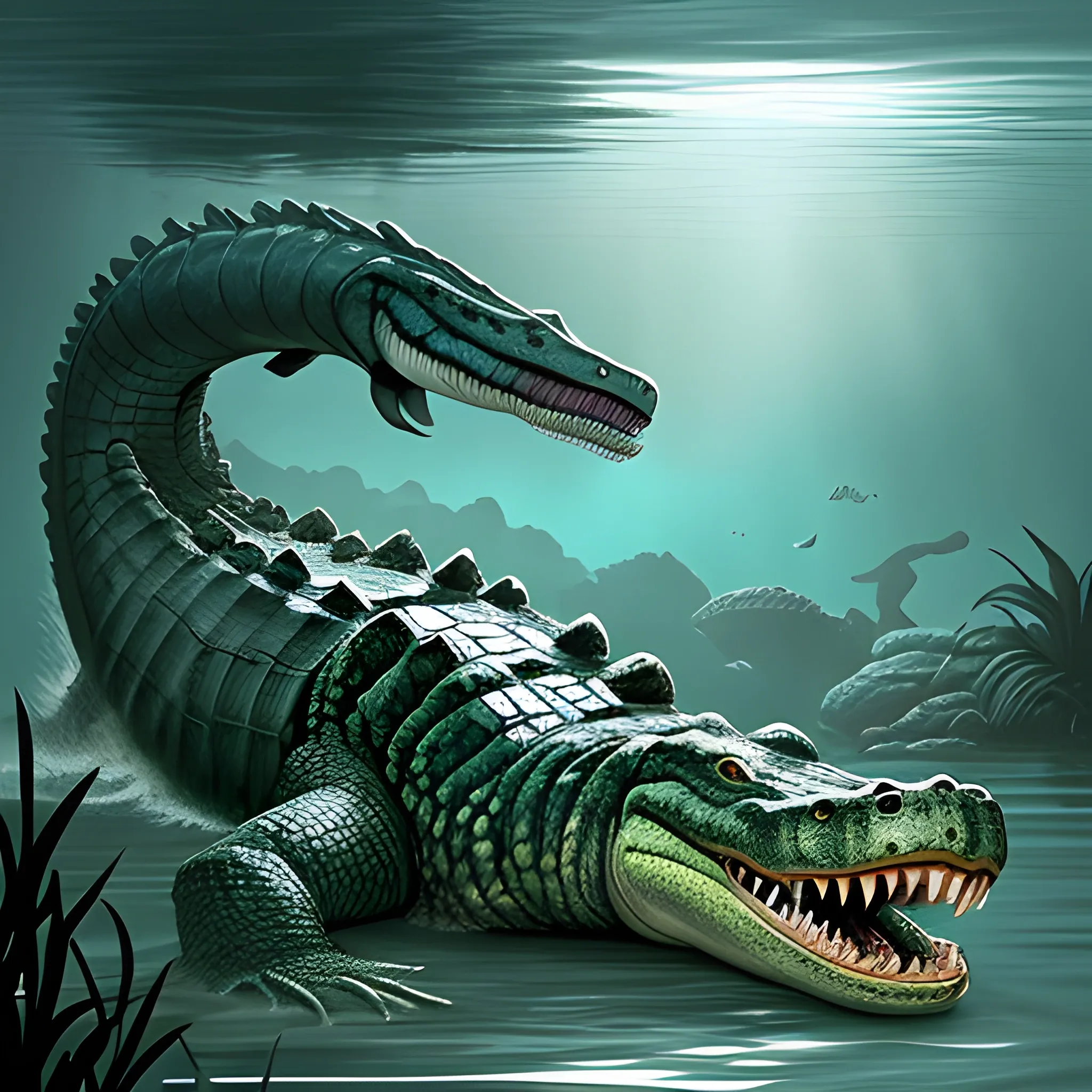
Appearance: The Giant Crocodile is an enormous and monstrous reptile , dwarfing its smaller counterpart in size and power. It has a massive body covered in thick and rugged scales that can range from dark greens to deep browns , perfectly camouflaging it in its aquatic habitat. Its long and powerful tail serves as a formidable weapon , enabling it to swim swiftly and strike with devastating force. The Giant Crocodile's eyes gleam with an intelligence and predatory instinct that sets it apart from ordinary creatures. Features: The Giant Crocodile is a colossal apex predator , boasting immense strength and resilience. Its jaws are filled with rows of sharp teeth , capable of crushing bones and armor with ease. Unlike its smaller kin , the Giant Crocodile is fully adapted for a purely aquatic lifestyle , rarely venturing onto land except to bask in the sun or establish dominance in its territory. Habitat: Giant Crocodiles prefer large bodies of freshwater , such as expansive rivers , deep lakes , and marshlands. They are territorial creatures , claiming vast stretches of water as their hunting grounds. In your DND world , they could inhabit mysterious swamps or hidden lagoons , guarding ancient secrets or treasures. Behavior: As ambush predators , Giant Crocodiles are masters of surprise attacks. They remain mostly submerged , with only their eyes and nostrils visible above the water's surface. When potential prey ventures too close , the Giant Crocodile strikes with astonishing speed and strength , dragging victims underwater to drown or consume. Role in the World: In your DND world , Giant Crocodiles could be legendary creatures , feared and respected by both locals and adventurers alike. They might be considered as guardians of ancient temples or revered as avatars of primordial nature. Druids and rangers might see them as symbols of untamed and primal power. Encountering a Giant Crocodile in the wild is a dangerous and potentially deadly event for adventurers. Its size and power make it an incredibly challenging opponent , even for a well-prepared party. Players must exercise extreme caution when navigating bodies of water known to be inhabited by Giant Crocodiles , as these creatures can deliver swift and lethal attacks. The presence of Giant Crocodiles in your campaign can create an atmosphere of danger and trepidation when exploring swampy and aquatic environments. Players will need to be constantly vigilant and employ strategic thinking to avoid becoming victims of these monstrous reptiles. Crossing waterways or searching for hidden artifacts in areas known to be Giant Crocodile territory can create a sense of high stakes and urgency in your DND world. ,
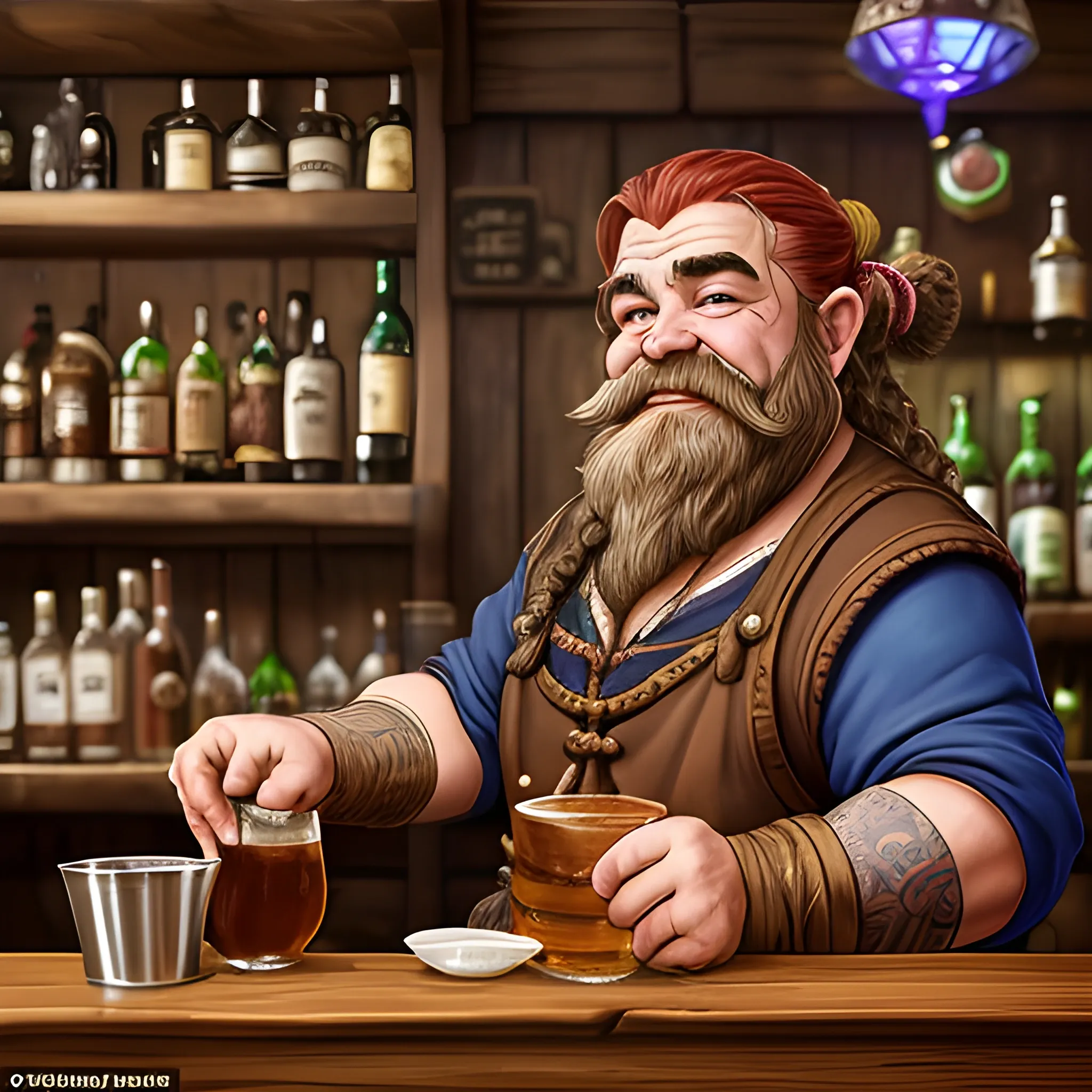
Appearance: The bartender is a stout and robust Dwarf , a natural fit for the role with their love of a good drink and merriment. Standing behind the bar with a barrel chest and muscular arms , they exude an air of confidence and competence. Their thick , braided beard is impeccably groomed , and their fiery red hair matches the gleam in their eyes. Despite their short stature , they carry themselves with pride and authority , ensuring that the tavern runs smoothly. Features: This Dwarf bartender is an expert in the art of brewing and mixing drinks , boasting an impressive knowledge of beverages from all corners of the realm. They take pride in their craft and are always eager to share their expertise with curious patrons. Their boisterous laughter can be heard throughout the establishment , setting the tone for a lively and convivial atmosphere. Habitat: This Dwarf bartender can be found in renowned taverns across the land , often in the heart of bustling cities or near mines and trade routes where Dwarves congregate. They may run an alehouse famous for its signature brew or manage an inn that welcomes travelers from near and far. In your DND world , this Dwarf bartender might be part of a close-knit Dwarven community or one of the few Dwarves venturing outside their mountain homes. Behavior: True to their Dwarven heritage , this bartender is hardworking , reliable , and fiercely loyal to their patrons. They value tradition and history , always eager to regale customers with tales of legendary heroes or the exploits of their ancestors. Their hearty demeanor and ability to hold their liquor make them the perfect drinking companion for those seeking camaraderie and mirth. Role in the World: In your DND world , this Dwarf bartender embodies the spirit of celebration and unity. They serve as a symbol of the joys of life , bringing people together to share stories and forge new friendships. Adventurers may find solace in their familiar presence , knowing that even in the farthest reaches of the realm , they can always find a friendly face in this Dwarf tavernkeeper. Encountering a Dwarf bartender in your campaign can be a delightful and memorable experience for players. It provides an opportunity to explore the rich cultural traditions of Dwarves and appreciate the sense of community and kinship they foster. The interactions with this lively bartender can lead to jovial role-playing moments , creating a sense of camaraderie among the players and their characters. The presence of a Dwarf bartender in your campaign world adds depth and authenticity to the portrayal of Dwarven culture. It showcases the Dwarves' love of craftsmanship , storytelling , and hearty revelry , painting a vivid picture of a race known for their lively spirits and strong bonds. This NPC can become a cherished and endearing character in your DND campaign , making the tavern they run a beloved location where players can find respite and warmth amidst the adventures that lie ahead. ,

